As we delve into the evolving landscape of kitchen appliances, one standout innovation that has captured the attention of both consumers and industry experts alike is the commercial air fryer. This article explores the multifaceted journey of this technology, from its rise in popularity to the challenges and opportunities it presents, all while shedding light on the environmental impact of these versatile kitchen tools.
The Rise of Commercial Air Fryers
The commercial air fryer industry has experienced a remarkable surge in popularity over recent years, transforming the way we think about kitchen appliances and healthy cooking. This shift is driven by a combination of consumer health consciousness, technological advancements, and the demand for convenience in fast-paced lifestyles.
As people become more aware of the health risks associated with traditional frying methods, the allure of air fryers has grown. These appliances use hot air to circulate around food, reducing the amount of oil needed by up to 80% compared to deep-frying. This has made them a favorite among health-conscious consumers looking to enjoy their favorite fried foods with a lighter footprint.
In the Western markets, especially in Europe and the USA, the trend towards healthier eating has been accelerated by the rise of fast-casual dining and the increasing number of people seeking to incorporate more home-cooked meals into their diets. Commercial air fryers have capitalized on this trend by offering a quick and easy way to prepare crispy, golden-brown dishes without the guilt.
The features that set top commercial air fryer models apart include their large capacity, which allows for batch cooking, and their ability to cook a variety of foods, from vegetables to meats to desserts. Many models also come with programmable settings and digital displays, making them user-friendly and adaptable to different recipes and cooking times.
Consumer trends have played a significant role in shaping the market for commercial air fryers. The preference for convenience cooking has led to the development of compact, countertop models that are perfect for small kitchens and apartments. Additionally, the rise of social media has fueled the popularity of air fryer recipes and cooking challenges, further driving demand.
Technology has been a key driver in the evolution of commercial air fryers. Innovations such as adjustable temperature controls, which allow for precise cooking, and features like a safety lock have made these appliances more reliable and versatile. The introduction of smart technology, such as Wi-Fi connectivity and mobile app integration, has also made it possible for users to monitor and control their air fryers remotely.
Market size and growth projections for commercial air fryers are impressive. According to market research, the global commercial air fryer market is expected to grow at a significant rate over the next few years, driven by the increasing number of health clubs, restaurants, and foodservice establishments adopting these appliances.
Despite the growth, the commercial air fryer sector faces challenges. One of the main hurdles is the need for continuous innovation to keep up with consumer expectations and to address any lingering concerns about the taste and texture of air-fried foods compared to traditionally fried options. Opportunities, however, abound, with potential for new applications in the foodservice industry and the development of more energy-efficient models.
Several successful companies have emerged as leaders in the commercial air fryer market. These companies have not only developed high-quality products but have also focused on customer service and support, which has helped build a loyal customer base.
Distribution channels and retail strategies have also evolved to meet the demands of the market. Online sales have become a significant part of the commercial air fryer market, with many manufacturers offering direct-to-consumer sales through their websites. Retailers have also recognized the value of these appliances and are featuring them prominently in their stores.
Lastly, the environmental impact of commercial air fryers is a topic of interest. As more consumers and businesses seek sustainable solutions, the industry is responding with eco-friendly designs and initiatives to reduce waste and energy consumption.
In summary, the rise of commercial air fryers is a testament to the industry’s ability to adapt to changing consumer needs and preferences. With a focus on health, convenience, and innovation, the commercial air fryer market is poised for continued growth in the years to come.
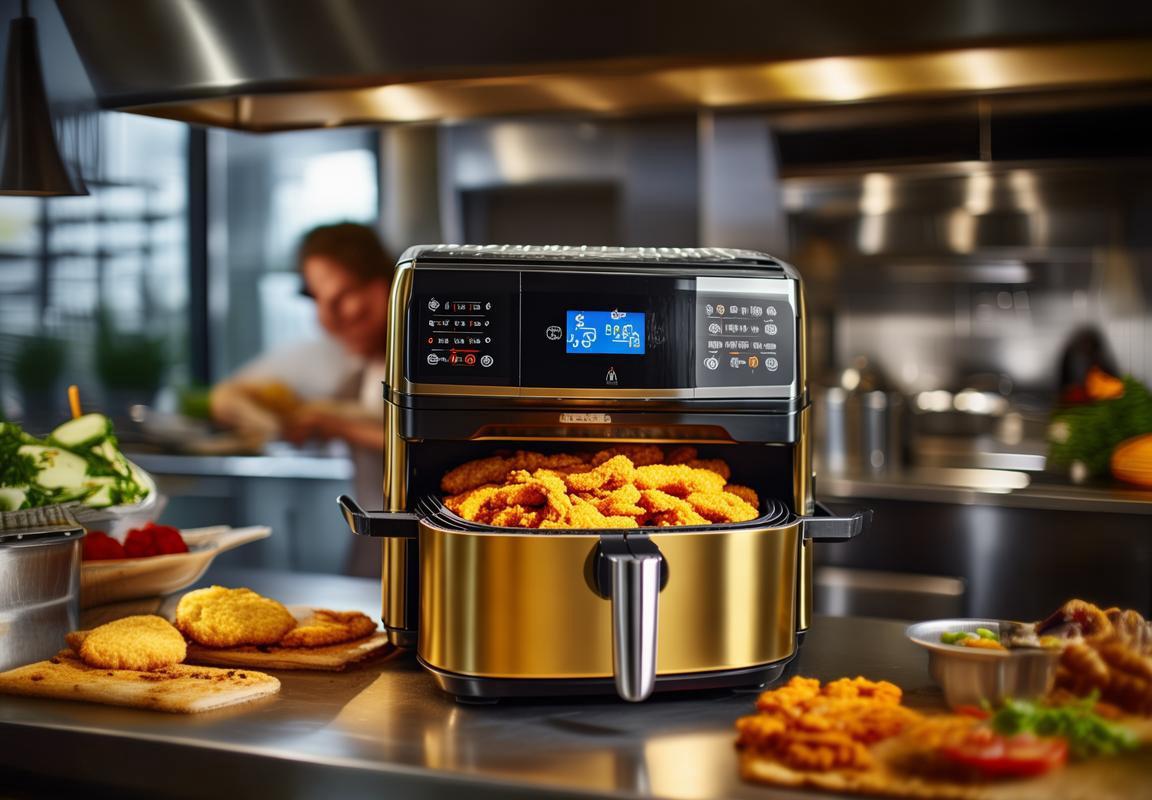
Market Dynamics in the Western Markets
In the Western markets, the landscape of the commercial kitchen appliances sector has been significantly transformed by the rise of commercial air fryers. This shift is driven by a myriad of factors, each contributing to the dynamic nature of this market.
The demand for healthier cooking methods has surged, with consumers increasingly seeking alternatives to traditional frying techniques. This health-conscious trend has fueled the popularity of commercial air fryers, which offer a way to prepare food with less oil while still achieving a crispy texture.
As the awareness of heart-healthy diets grows, so does the interest in commercial air fryers. These appliances are not only a hit in restaurants and cafes but also in institutional kitchens, where the need for low-fat, high-quality cooking solutions is paramount.
The convenience factor cannot be overlooked. Commercial air fryers are designed to save time and labor, allowing chefs to focus on other aspects of their culinary creations. This efficiency is particularly appealing in fast-paced environments where speed is of the essence.
The technology behind commercial air fryers has advanced significantly, offering precise temperature control and programmable settings. These features have made it easier for chefs to replicate the taste and texture of fried foods without the negative health impacts of deep-frying.
The market for commercial air fryers has seen a surge in innovation, with manufacturers continually introducing new models that cater to specific needs. From countertop models to integrated units, the variety is vast, and each design aims to address the unique requirements of different commercial kitchens.
The cost-effectiveness of commercial air fryers is another driving force. While the initial investment may be higher than traditional fryers, the reduced oil usage and lower maintenance costs over time make them a financially prudent choice for businesses.
The sustainability movement has also played a role in the market dynamics. As more restaurants and commercial kitchens adopt eco-friendly practices, the energy-efficient nature of air fryers aligns with these green initiatives.
Consumer preferences are shifting towards more diverse and international cuisines, and commercial air fryers are versatile enough to handle a wide range of recipes, from French fries to tempura. This adaptability has broadened their appeal across various culinary genres.
The competitive landscape is fierce, with established appliance brands entering the market alongside specialized air fryer manufacturers. This competition has led to a constant stream of new features and improvements, ensuring that the product remains at the forefront of commercial kitchen technology.
Regulatory changes, such as the implementation of stricter food safety standards, have also influenced the market. Commercial air fryers, with their ability to reduce the risk of oil-based fires and their ease of cleaning, are becoming a preferred choice for compliance with these new guidelines.
The integration of smart technology is another trend that is reshaping the market. With features like remote monitoring and connectivity, commercial air fryers are becoming part of a larger ecosystem of smart kitchen appliances, offering enhanced control and efficiency.
The rise of food trucks and pop-up restaurants has expanded the market for portable and compact commercial air fryers. These mobile kitchens require versatile appliances that can be easily transported and set up, and air fryers fit the bill perfectly.
The global supply chain has also had an impact on the Western market. As manufacturers source components from around the world, they are able to offer competitive pricing and a wider range of products to meet the diverse needs of the market.
Lastly, the rise of health and wellness trends has not only influenced the demand for commercial air fryers but has also spurred the development of healthier side dishes and snacks, further enhancing the market’s appeal.
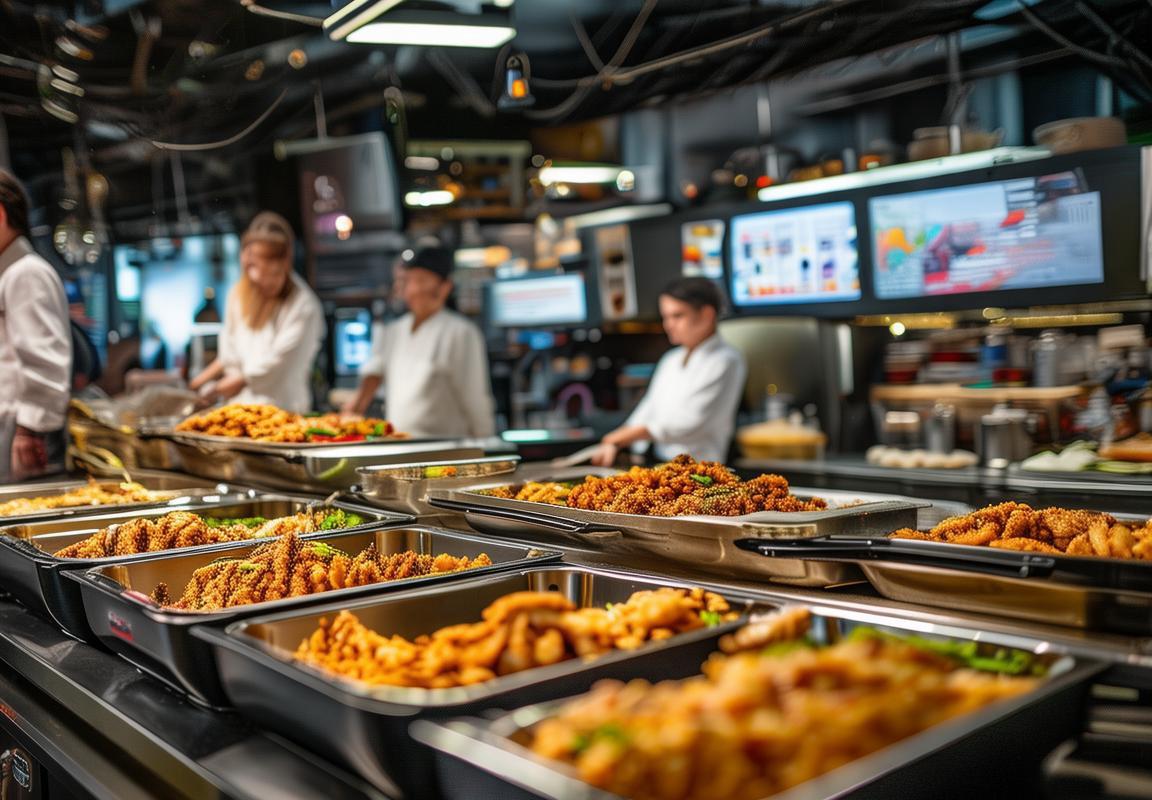
Key Features of Top Commercial Air Fryer Models
In the ever-evolving landscape of commercial kitchen appliances, the rise of air fryers has been nothing short of revolutionary. These appliances have become a staple in many commercial kitchens, offering a healthier alternative to traditional frying methods. Let’s delve into the key features that set the top commercial air fryer models apart from the rest.
-
Capacity and SizeTop commercial air fryers come in various sizes to cater to different kitchen needs. From compact models that are perfect for small cafes and delis to large capacity units suitable for busy restaurants and foodservice operations, these fryers are designed to handle a wide range of volumes. The capacity often ranges from 2 to 10 liters, with some models offering expandable capabilities to accommodate more extensive operations.
-
Advanced Cooking TechnologyThe heart of any commercial air fryer lies in its cooking technology. High-quality models incorporate rapid air circulation systems that evenly distribute hot air around the food, ensuring consistent and efficient cooking. This technology not only reduces cooking times but also eliminates the need for large amounts of oil, making it a healthier choice for both customers and operators.
-
Energy EfficiencyCommercial air fryers are not just about health; they are also about efficiency. Modern fryers are designed to be energy-efficient, using up to 80% less oil than traditional fryers while still delivering the same delicious results. This not only reduces operational costs but also has a positive impact on the environment.
-
Easy to Use ControlsUser-friendliness is a key feature in top commercial air fryer models. These fryers typically come with intuitive controls, including digital displays and pre-programmed settings for a variety of foods. Some models even offer programmable timers and temperature controls, allowing chefs to customize the cooking process to perfection.
-
Safety FeaturesSafety is paramount in commercial kitchens, and the top air fryer models do not compromise. They are equipped with safety features such as automatic shut-off when the fryer is empty or when the door is open, preventing accidents and fires. Some fryers also have cool-touch exterior surfaces to prevent burns and spills.
-
Easy Cleaning and MaintenanceCleaning up after a busy shift is a crucial part of kitchen operations. Top commercial air fryers are designed with easy-to-clean components, such as removable baskets and non-stick interiors. This not only saves time but also ensures that the fryer is ready for the next batch of food without delay.
-
Versatility in CookingWhile known for their ability to fry, top commercial air fryers offer versatility beyond traditional frying. Many models can also bake, roast, and grill, allowing for a diverse menu with minimal additional equipment. This versatility is a game-changer for kitchens looking to expand their offerings without adding complexity to their setup.
-
Portability and Space-Saving DesignIn today’s commercial kitchens, space is often at a premium. Top air fryer models are designed with compact dimensions and portability in mind, making them ideal for kitchens with limited space. Some models can even be wall-mounted to save valuable countertop real estate.
-
Durable ConstructionCommercial kitchens are demanding environments, and the top air fryer models are built to last. They are typically constructed with stainless steel components that resist corrosion and are resistant to high heat, ensuring long-term reliability and performance.
-
Brand Reputation and SupportLastly, the reputation of the brand and the level of customer support are crucial factors. Top commercial air fryer models often come from well-established manufacturers known for their quality and service. This means that operators can expect robust warranties, reliable after-sales service, and access to parts and repairs when needed.
In summary, the key features of top commercial air fryer models encompass a blend of capacity, advanced technology, efficiency, safety, ease of use, and versatility. These features make them a valuable addition to any commercial kitchen, offering a healthier, more efficient, and versatile cooking solution.
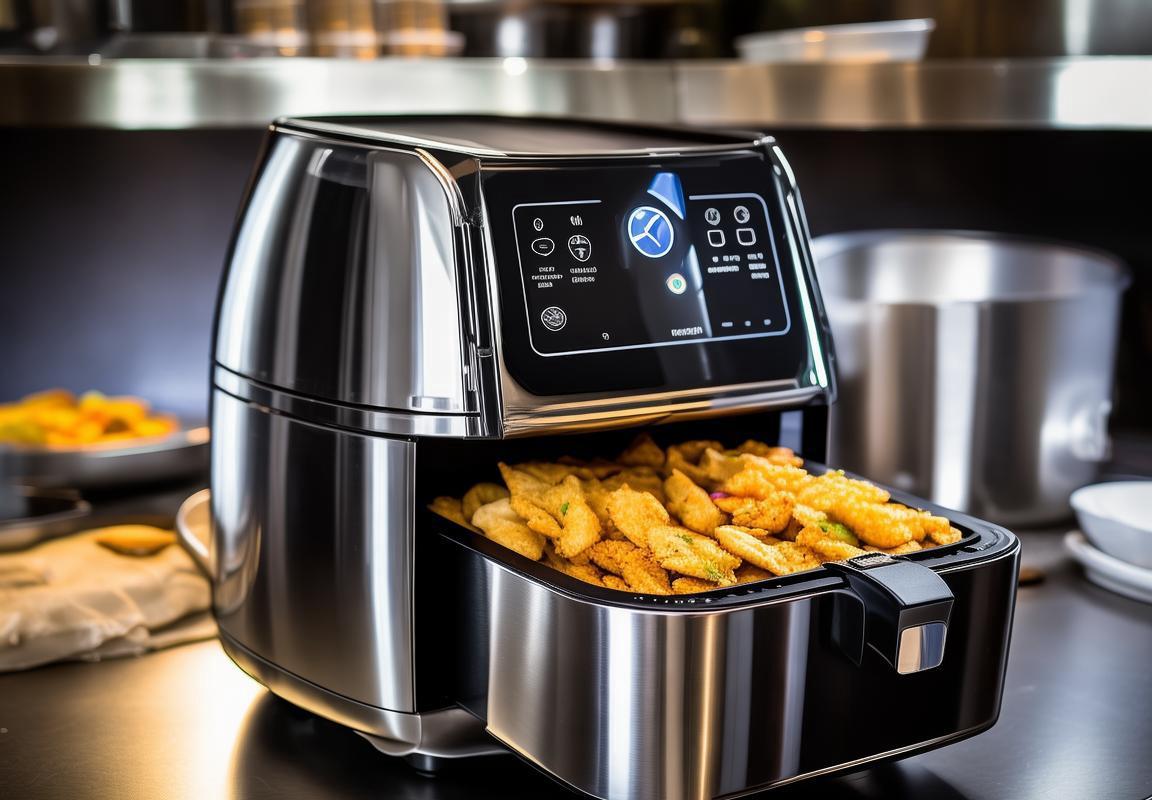
Consumer Trends Influencing the Market
In recent years, consumer trends have significantly shaped the market for commercial air fryers. These trends reflect not only the changing demands of consumers but also the broader shifts in the foodservice industry. Let’s delve into some of the key trends that are driving this market forward.
The surge in health consciousness is a major factor influencing the market. Consumers are increasingly seeking healthier alternatives to traditional frying methods, which often involve higher fat content. Commercial air fryers offer a solution that allows for crispy, golden results with a fraction of the oil, appealing to health-conscious diners and operators alike.
There’s a growing preference for convenience and speed in the foodservice sector. With busy lifestyles and tight schedules, operators are looking for ways to reduce preparation times without compromising on quality. Commercial air fryers are perfectly suited to this demand, as they can cook a variety of foods quickly and efficiently, ensuring that customers receive their meals promptly.
Eco-friendly initiatives are also playing a role in the market’s dynamics. Sustainability is a key concern for many businesses, and commercial air fryers are seen as a more environmentally friendly option due to their lower energy consumption and the reduced need for oil. This aligns with the broader trend of corporate social responsibility and can be a significant selling point for manufacturers.
Customization and versatility are becoming increasingly important. Operators are looking for equipment that can handle a wide range of recipes and ingredients. Top commercial air fryer models often come with adjustable temperature settings, allowing for precise control over cooking times and temperatures. This flexibility means that the same fryer can be used to prepare everything from crispy French fries to golden onion rings, catering to diverse menus.
Smart technology integration is another trend that’s reshaping the market. Modern commercial air fryers are equipped with features like digital displays, timers, and preset programs that make them user-friendly and efficient. This level of technology not only simplifies the cooking process but also helps operators to maintain consistency across their menus.
The demand for smaller, countertop models is on the rise. These compact fryers are ideal for smaller operations or those with limited kitchen space. They offer the same functionality as larger models but with a more space-efficient design. This trend is particularly evident in food trucks, cafes, and smaller restaurants where every square inch counts.
The rise of fusion cuisine has also had an impact on the market. Operators are looking for equipment that can handle a variety of cooking techniques, including air frying, which can be used to create unique dishes that blend different culinary traditions. This has led to the development of commercial air fryers that can be used in conjunction with other cooking methods, such as grilling or roasting.
Food safety and hygiene are paramount concerns for any foodservice operator. Commercial air fryers often come with features that make cleaning and maintenance easier, such as non-stick surfaces and dishwasher-safe parts. This not only helps to reduce downtime but also ensures that the fryers are ready to use at any time, maintaining high standards of food safety.
Lastly, the influence of social media and online reviews cannot be overlooked. Consumers are more likely to try new products if they see positive feedback from others. This has led to a trend where operators are more willing to invest in new equipment based on the recommendations of their customers and peers.
These consumer trends highlight the dynamic nature of the commercial air fryer market. As operators continue to seek out innovative solutions that meet the evolving demands of their customers, the market for commercial air fryers is expected to grow, driven by these key trends.
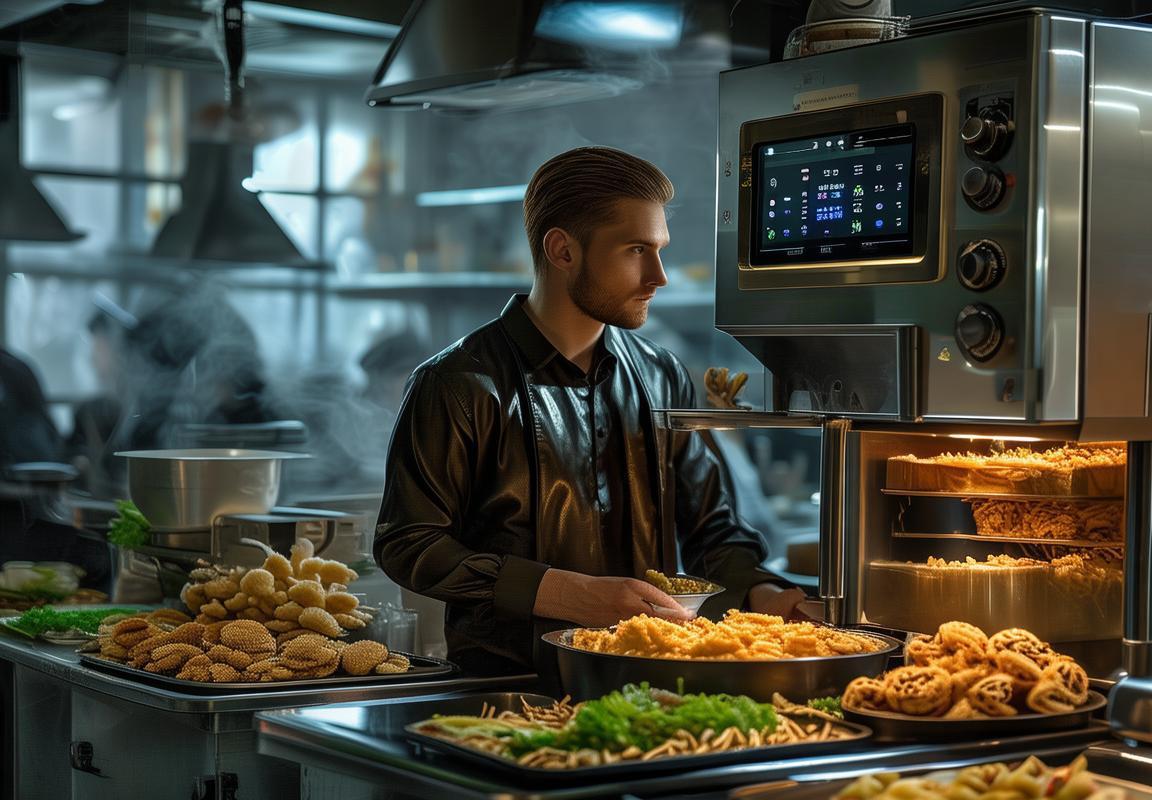
The Role of Technology in Commercial Air Fryer Development
The integration of advanced technology has revolutionized the commercial air fryer market, bringing about significant changes in how these appliances are developed and perceived by consumers. From precise temperature control to innovative cooking methods, technology has played a pivotal role in shaping the landscape of commercial air fryers.
Smart Sensors and Precision CookingModern commercial air fryers are equipped with smart sensors that ensure precise temperature control throughout the cooking process. These sensors allow for consistent and even cooking, reducing the risk of overcooking or undercooking. The ability to maintain a specific temperature range is particularly crucial for businesses that require high-quality, uniform products.
Energy Efficiency InnovationsEnergy efficiency has become a major focus in commercial kitchen appliances, and air fryers are no exception. Technological advancements have led to the development of fryers that consume less energy while still delivering the desired cooking results. This not only saves on operational costs but also aligns with the growing demand for eco-friendly and sustainable kitchen solutions.
Digital Cooking ProgramsMany top commercial air fryer models now come with digital cooking programs that offer a range of pre-set settings for different types of food. These programs simplify the cooking process, allowing operators to select the appropriate settings for frying, roasting, or baking without the need for manual adjustments. The convenience of these programs has made commercial air fryers more accessible to a wider range of users.
Self-Cleaning FunctionsOne of the most innovative technological features in modern commercial air fryers is the self-cleaning function. This feature uses high temperatures to burn off excess oil and food particles, making the cleaning process much quicker and less labor-intensive. The integration of self-cleaning technology has significantly reduced the maintenance requirements for these appliances.
Improved Safety FeaturesSafety is a top priority in the commercial kitchen environment, and technology has played a key role in enhancing the safety of air fryers. Modern fryers are equipped with features like automatic shut-off systems that activate when the fryer is left unattended or when the temperature exceeds safe levels. This not only prevents accidents but also ensures compliance with health and safety regulations.
User Interface EnhancementsThe user interface of commercial air fryers has seen considerable advancements, with many models now featuring intuitive touchscreens or digital displays. These interfaces provide clear and easy-to-read information, including cooking times, temperatures, and any error messages. The improved user interface has made the operation of these appliances more straightforward and less intimidating for staff.
Remote Monitoring and ControlFor businesses looking to increase efficiency and productivity, remote monitoring and control capabilities are becoming increasingly important. Some commercial air fryers can now be connected to a network, allowing operators to monitor and adjust settings from a smartphone or tablet. This feature is particularly beneficial for large-scale operations or those with multiple fryers in different locations.
Customizable Cooking ProfilesThe ability to customize cooking profiles is another technological advancement that has gained traction in the commercial air fryer market. Operators can save their preferred settings for different types of food, ensuring consistent results every time. This level of customization allows for greater flexibility and efficiency in the kitchen.
Integration with Smart Kitchen SystemsCommercial air fryers are increasingly being integrated with smart kitchen systems, allowing for seamless communication with other appliances and equipment. This integration can optimize the workflow, reduce waste, and provide valuable data analytics that can inform operational decisions.
In conclusion, technology has played a transformative role in the development of commercial air fryers, enhancing their functionality, efficiency, and safety. As technology continues to evolve, we can expect to see even more innovative features that will further shape the future of the commercial air fryer market.
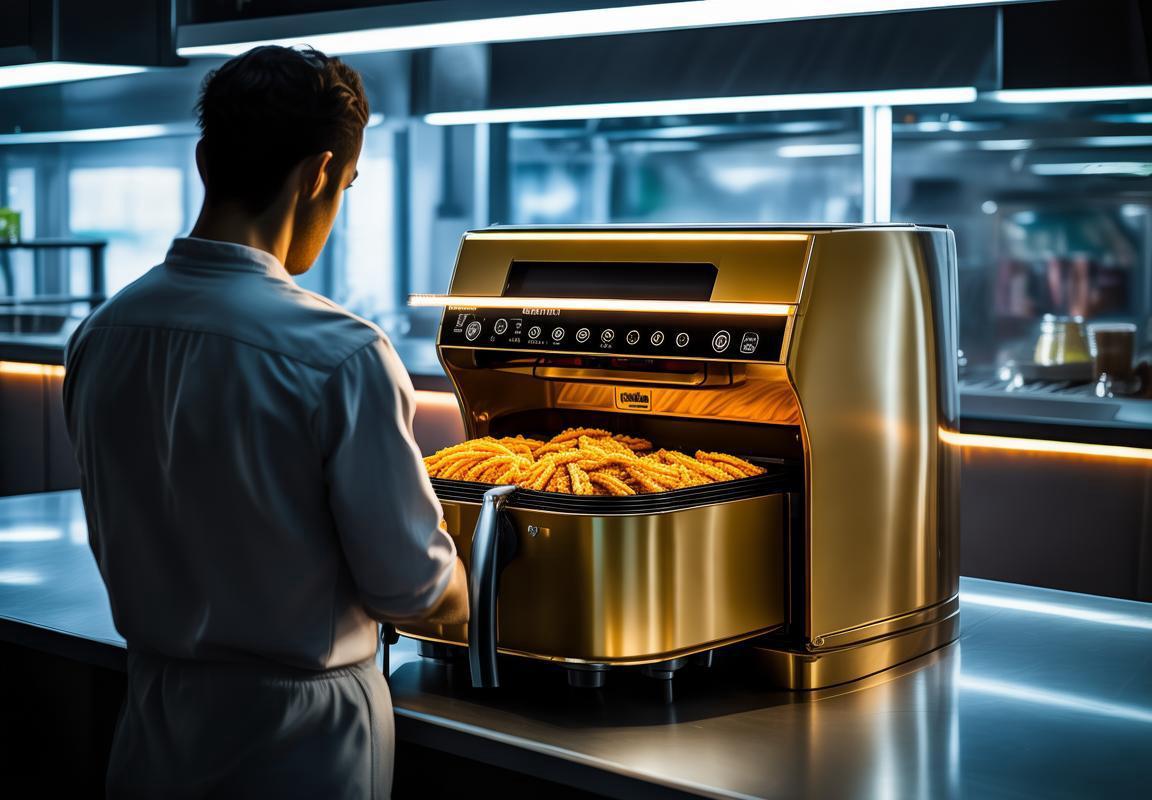
Market Size and Growth Projections
The market for commercial air fryers has been witnessing remarkable growth, driven by a surge in consumer demand for healthier and more efficient cooking solutions. Estimations show that the market size has been expanding at a significant pace, and projections indicate an even more robust trajectory ahead.
In recent years, the global commercial air fryer market has seen a rise in the number of units sold. This upward trend can be attributed to the growing awareness of health and wellness, with consumers increasingly seeking alternatives to deep-frying that offer a healthier cooking method. The market size, therefore, reflects a collective shift towards healthier lifestyle choices.
The rapid growth in the market size is also fueled by the expansion of the hospitality industry. Restaurants, cafes, and hotels are investing in commercial air fryers to offer patrons a variety of crispy and low-fat options. As these establishments continue to adopt this technology, the market for commercial air fryers is expected to grow further.
According to industry reports, the commercial air fryer market is anticipated to experience a compounded annual growth rate (CAGR) of around 7% over the next few years. This projection is underpinned by the continuous development of innovative features that enhance user experience and efficiency. As more businesses recognize the potential of commercial air fryers to reduce cooking time and energy consumption, the market is poised to expand significantly.
Moreover, the market size is being bolstered by the entry of new players and the expansion of existing manufacturers. These companies are not only introducing new models but are also focusing on customization to cater to specific needs of various sectors, such as the foodservice industry, which accounts for a substantial portion of the market.
Geographically, the market is witnessing growth across various regions. Europe and North America are currently the leading markets, driven by the high adoption rates in these regions. However, Asia Pacific is expected to emerge as a significant growth area due to the increasing health consciousness among consumers and the burgeoning foodservice sector.
The size of the market is also influenced by the integration of smart technology into commercial air fryers. Features like programmable settings, Bluetooth connectivity, and remote monitoring are becoming more common, attracting a tech-savvy consumer base. As these technologies become more prevalent, the market is expected to see an increase in the average selling price of commercial air fryers.
Additionally, the market is expected to benefit from the development of eco-friendly and energy-efficient models. With a growing focus on sustainability, businesses are looking for cooking equipment that aligns with their environmental goals. This trend is likely to contribute to the market’s growth, as manufacturers continue to innovate in this direction.
In conclusion, the market size and growth projections for commercial air fryers are impressive, reflecting a strong demand for healthier cooking solutions and technological advancements. As the market continues to evolve, it is expected to see substantial expansion, driven by consumer preferences, industry needs, and environmental concerns.
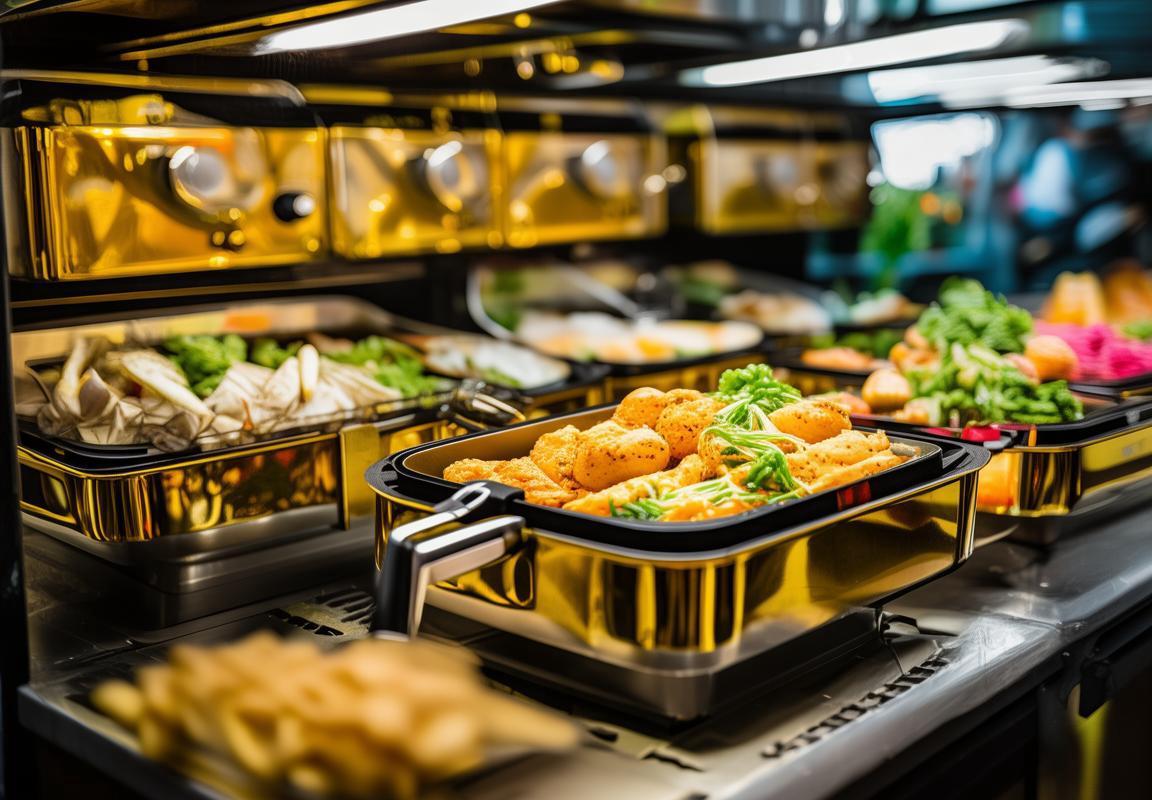
Challenges and Opportunities in the Commercial Air Fryer Sector
The commercial air fryer sector is a dynamic and rapidly evolving market, facing a myriad of challenges and opportunities that shape its trajectory. Here’s a closer look at the landscape:
Innovation in Cooking TechnologyThe industry is witnessing a surge in the development of advanced cooking technologies, with a focus on energy efficiency and healthier cooking methods. New models are integrating features like adjustable temperature controls and smart sensors to provide precise cooking experiences.
Health and Wellness FocusWith a growing awareness of health and wellness, consumers are increasingly seeking cooking solutions that offer healthier alternatives to traditional frying methods. This trend is driving the demand for commercial air fryers, as they provide a low-fat, healthier option without compromising on taste.
Regulatory ComplianceNavigating the complexities of food safety regulations is a significant challenge for commercial air fryer manufacturers. Ensuring compliance with international standards and certifications is crucial for market entry and maintaining a good reputation.
Market SaturationAs the popularity of air fryers rises, the market is becoming increasingly saturated with competitors. Standing out in a crowded market requires innovative marketing strategies, strong branding, and unique product features.
E-commerce ExpansionThe rise of e-commerce has transformed the way consumers purchase kitchen appliances. While this has opened up new sales channels, it also poses challenges in terms of logistics, customer service, and competition from online marketplaces.
Sustainability InitiativesConsumers are increasingly concerned about the environmental impact of their purchases. This has led to a demand for more sustainable products, including those made from recyclable materials and with energy-efficient designs.
Technological IntegrationThe integration of smart technology into commercial air fryers is on the rise, offering features like remote control via smartphone apps and automated cooking programs. This technological advancement can enhance user experience but also requires ongoing software updates and support.
Globalization of the MarketThe commercial air fryer market is becoming more global, with manufacturers targeting international markets. This expansion brings opportunities for growth but also challenges such as adapting to different cultural preferences and market regulations.
Cost of ProductionThe cost of production is a critical factor in the commercial air fryer sector. Rising costs of materials, labor, and technology can impact pricing and profitability. Finding ways to optimize production processes and manage costs is essential for long-term success.
Product DiversificationManufacturers are exploring product diversification to cater to different market segments. This includes everything from countertop models to integrated kitchen appliances, each designed to meet specific customer needs.
Customer EducationEducating consumers about the benefits of air frying can be challenging. Many consumers are unfamiliar with the technology and its health benefits. Marketing efforts must focus on educating customers and addressing common misconceptions.
Supply Chain ManagementEfficient supply chain management is crucial for the commercial air fryer sector. Ensuring a steady supply of components and managing inventory levels are key to meeting market demand and reducing lead times.
Energy EfficiencyEnergy efficiency remains a major concern for both manufacturers and consumers. Developing air fryers that consume less energy not only helps the environment but also offers cost savings for businesses and consumers alike.
Competition from Traditional Frying MethodsDespite the health benefits of air frying, traditional frying methods still hold a strong market share. The challenge lies in convincing consumers to switch from deep frying to air frying, often a more expensive and complex process.
These challenges and opportunities in the commercial air fryer sector are intertwined, requiring a strategic approach to innovation, marketing, and sustainability to thrive in the competitive landscape.
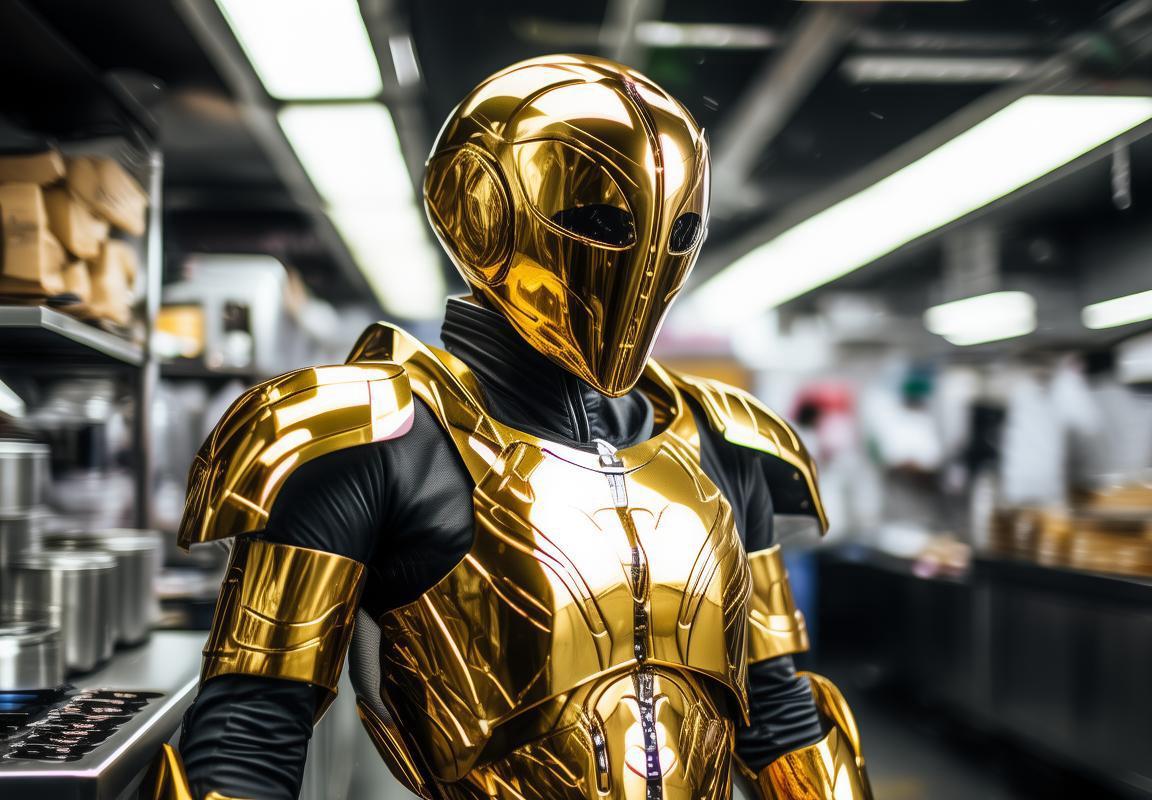
Case Studies: Successful Commercial Air Fryer Manufacturers
In the world of commercial air fryer manufacturing, a few companies have stood out, not just for their products but also for their innovative strategies and market penetration. Let’s delve into some case studies of successful commercial air fryer manufacturers.
One such company is Gourmet AirFryers, known for their premium line of commercial air fryers. They’ve managed to carve out a niche by focusing on high-quality components and energy efficiency. Their case stands out because they’ve managed to balance advanced technology with user-friendly design, making their air fryers appealing to a wide range of customers.
Gourmet AirFryers has also been successful in leveraging the power of social media to connect with their audience. They’ve created engaging content that showcases the benefits of their products, from reducing oil usage to providing healthier fried food options. This approach has not only helped them build a loyal customer base but also positioned them as thought leaders in the commercial air fryer market.
Another standout in the industry is PowerCook Air Fryers, which has focused on creating compact yet powerful machines. Their air fryers are designed for commercial kitchens with limited space but high demand for healthy cooking solutions. PowerCook has seen success by catering to specific market needs, offering a variety of models that can be customized to meet different kitchen layouts and cooking requirements.
One key aspect of PowerCook’s strategy is their partnership with culinary schools and chefs. By offering their air fryers for educational purposes, they’ve been able to showcase the versatility and efficiency of their products. Chefs and culinary students alike have praised the ease of use and the quality of the food produced, which has translated into strong word-of-mouth referrals.
In the realm of eco-friendly commercial air fryers, GreenChef Air Fryers has emerged as a leader. Their commitment to sustainability is evident in their use of recycled materials and energy-saving technologies. A case in point is their “EcoPro” line, which has gained traction among environmentally conscious consumers and businesses.
GreenChef’s success lies in their comprehensive approach to sustainability. They’ve not only designed eco-friendly air fryers but also created a range of accessories and cookbooks that promote healthier eating habits. This holistic approach has allowed them to appeal to a broader market, including eco-conscious restaurants, schools, and health-conscious consumers.
EcoChef Air Fryers, another player in the sustainable market, has focused on simplicity and functionality. Their air fryers are designed with intuitive interfaces and easy-to-clean components, making them a favorite among busy commercial kitchens. The company’s case is particularly compelling because they’ve managed to maintain a competitive price point while offering premium features.
EcoChef’s strategy includes a strong focus on customer service and product warranties. They’ve trained their sales team to not only sell the product but also to educate customers on the best practices for using their air fryers. This dedication to customer satisfaction has resulted in a high return rate and repeat business.
One final success story is that of SmartFry Air Fryers, a company that has revolutionized the commercial air fryer market with their smart technology. Their air fryers are equipped with WiFi connectivity, allowing chefs to monitor and control their cooking process remotely. This level of innovation has not only made SmartFry a favorite among tech-savvy chefs but also among businesses looking to improve their operational efficiency.
SmartFry’s case is particularly interesting because they’ve managed to stay ahead of the curve by continuously updating their technology. They’ve rolled out several software updates and have a dedicated team working on new features. This commitment to innovation has kept them at the forefront of the commercial air fryer industry.
These case studies highlight the diverse strategies employed by successful commercial air fryer manufacturers. Whether it’s focusing on quality, sustainability, technology, or customer service, each company has found its unique path to success in a rapidly evolving market.
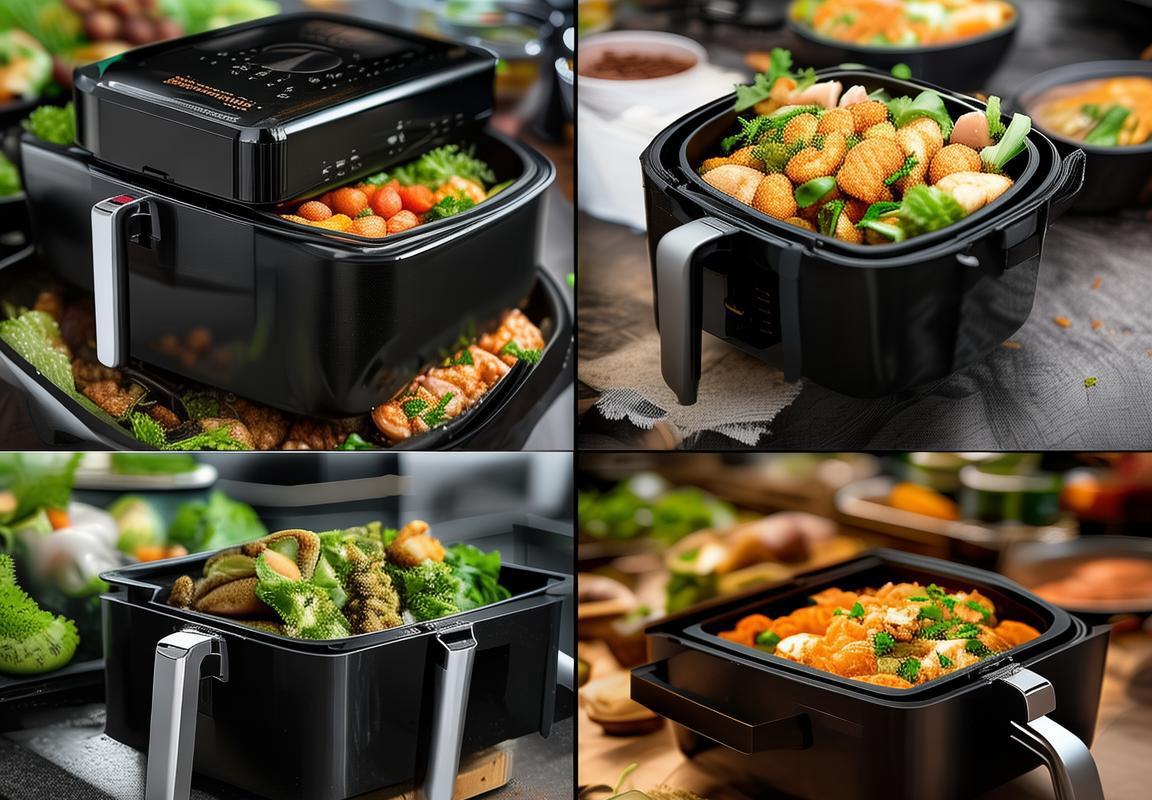
Distribution Channels and Retail Strategies
In the bustling landscape of commercial air fryer sales, the paths to market and the strategies employed by retailers are as varied as the fryers themselves. Understanding these channels and strategies is crucial for both manufacturers and consumers seeking to navigate the market effectively.
Retailers often leverage a mix of online and physical stores to reach a wider audience. Online platforms have become a cornerstone for many, offering convenience and accessibility. Online marketplaces like Amazon, eBay, and Alibaba have become go-to destinations for customers seeking a variety of commercial air fryers, from countertop models to industrial-sized units. These platforms provide a level of transparency that can be hard to match in physical stores, with detailed product descriptions, customer reviews, and often, video demonstrations of the fryers in action.
Physical retail locations, on the other hand, offer a tactile experience that can be compelling for certain customers. Showrooms allow potential buyers to see, touch, and even test the fryers before making a purchase. This hands-on approach can be particularly effective for businesses looking to invest in a fryer for their commercial kitchen, where the practicality and durability of the equipment are paramount.
In terms of retail strategies, manufacturers and retailers are increasingly focusing on the concept of ‘bundling.’ This involves pairing air fryers with complementary products, such as cookbooks, seasoning kits, or even related kitchen appliances. For instance, a commercial air fryer might be bundled with a set of non-stick fry baskets or a recipe book that showcases the health benefits and versatility of air frying. This approach not only boosts sales but also enhances customer satisfaction by providing a complete solution.
Loyalty programs and membership rewards are also gaining traction. By offering repeat customers discounts or exclusive deals, retailers can encourage brand loyalty and repeat purchases. Some stores even offer loyalty points that can be redeemed for future purchases or special promotions, which can be a powerful incentive for both new and returning customers.
The rise of subscription services is another innovative retail strategy. Customers can subscribe to receive regular updates on new products, discounts, or even a new air fryer every so often. This model keeps the brand at the forefront of consumers’ minds and can lead to consistent sales over time.
From a marketing standpoint, social media has become a crucial tool for both manufacturers and retailers. High-quality images and engaging content showcasing the features and benefits of commercial air fryers can drive traffic to online stores and physical locations. Influencer partnerships have become a common practice, with chefs and food bloggers using these fryers in their recipes and sharing their experiences with their followers.
In-store demonstrations and cooking classes are also popular strategies. Retailers invite customers to try out the air fryers themselves, often with a chef or a representative from the manufacturer on hand to provide guidance and answer questions. This interactive experience can significantly influence purchasing decisions, especially for customers who are still hesitant about the technology.
As for the future, the emphasis on sustainability is likely to influence retail strategies. Retailers are increasingly looking to reduce packaging waste and carbon footprints by offering eco-friendly packaging options and emphasizing the energy-saving benefits of air fryers. This not only appeals to environmentally conscious consumers but also aligns with the broader trend towards sustainability in the foodservice industry.
In conclusion, the distribution channels and retail strategies for commercial air fryers are diverse and evolving. From online marketplaces to physical showrooms, from bundling deals to loyalty programs, these strategies are designed to meet the needs of a wide range of customers and to keep the commercial air fryer market dynamic and competitive.
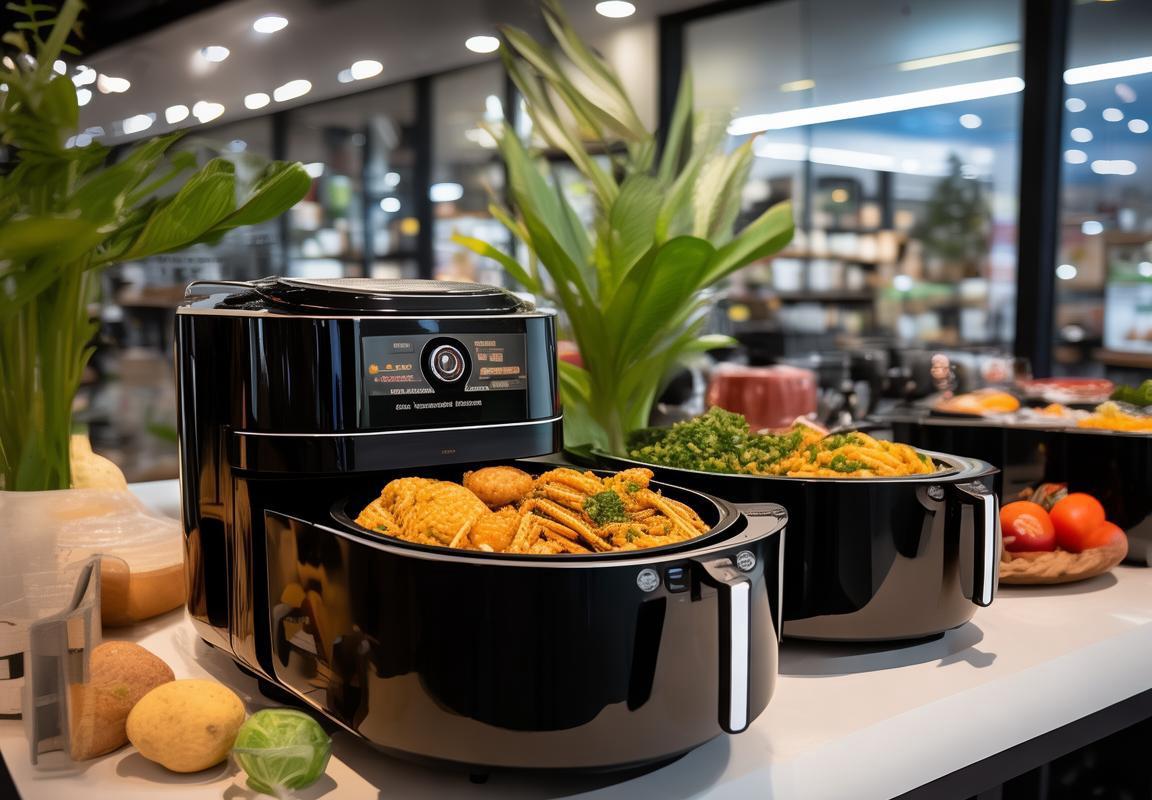
The Environmental Impact of Commercial Air Fryers
The environmental impact of commercial air fryers is a multifaceted issue that encompasses both the production process and the end-of-life phase. As these appliances gain popularity in commercial kitchens worldwide, understanding their environmental footprint becomes crucial.
Manufacturing ProcessesThe manufacturing of commercial air fryers involves various stages that can impact the environment. From the extraction of raw materials, such as metals, plastics, and ceramics, to the assembly and packaging, each step has its environmental implications. The use of energy-intensive machinery and the release of emissions during the production process can contribute to greenhouse gas emissions and air pollution.
Energy EfficiencyOne of the key environmental considerations is the energy efficiency of commercial air fryers. These appliances are designed to use less oil and heat compared to traditional deep-frying methods, which can lead to energy savings. However, the efficiency of the fryer itself is also a factor. Advanced models often come with features like adjustable temperature controls and automatic shut-off, which can further reduce energy consumption and minimize the environmental impact.
Waste GenerationThe production and disposal of commercial air fryers contribute to waste generation. The materials used in their construction can be challenging to recycle, and if not disposed of properly, they can end up in landfills or oceans. Additionally, packaging materials, such as Styrofoam or plastic, can add to the waste burden. The design of these appliances and their components must be carefully considered to reduce waste throughout their lifecycle.
Life Cycle AssessmentLife cycle assessment (LCA) is a tool used to evaluate the environmental impact of products from cradle to grave. When applied to commercial air fryers, LCA can reveal the most significant environmental impacts at each stage. For instance, while the appliance itself may be energy-efficient, the production phase might have a higher carbon footprint, highlighting the need for improvements in manufacturing processes.
Regulatory ComplianceAs awareness of environmental issues grows, regulations are being put in place to mitigate the impact of commercial appliances. Manufacturers are increasingly required to adhere to standards that limit emissions and waste generation. Compliance with these regulations not only helps protect the environment but also ensures that products meet consumer expectations for sustainability.
Energy Savings and Carbon Footprint ReductionCommercial air fryers are designed to reduce energy consumption, which in turn can lead to significant carbon footprint reductions. By replacing traditional deep-frying methods with air frying, restaurants and food service establishments can cut down on their energy bills and reduce their carbon emissions. This shift towards more sustainable cooking practices is beneficial for the environment and can also contribute to a business’s overall sustainability goals.
End-of-Life ConsiderationsAt the end of their useful life, commercial air fryers must be responsibly disposed of or recycled. This includes finding ways to recycle the fryers’ components and ensuring that any materials that cannot be recycled are disposed of in an environmentally friendly manner. Initiatives such as take-back programs and recycling facilities specifically for commercial kitchen equipment are becoming more common.
Consumer Awareness and PreferencesConsumer awareness of environmental issues is on the rise, and this is influencing purchasing decisions. Consumers are increasingly seeking out products that are environmentally friendly, and this includes commercial kitchen equipment. As a result, manufacturers are under pressure to produce more sustainable appliances that align with these preferences.
Innovation in Materials and DesignTo address the environmental impact of commercial air fryers, manufacturers are exploring innovative materials and design approaches. These can range from using recycled materials in the construction of the fryer to designing the appliance with modularity in mind, allowing for easier disassembly and recycling. The industry is witnessing a trend towards sustainability in materials and design that can significantly reduce the environmental impact of these appliances.
ConclusionThe environmental impact of commercial air fryers is a complex issue that touches on various aspects of the product lifecycle. By focusing on energy efficiency, responsible manufacturing practices, and innovative design, manufacturers can minimize the negative environmental effects while meeting the demands of a more environmentally conscious market. As the industry continues to evolve, the importance of sustainability in the production and disposal of commercial air fryers will only grow.